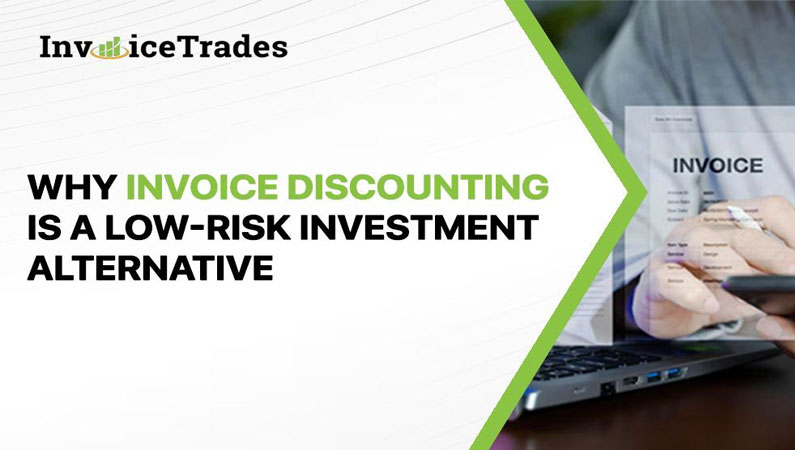
This short-term investment strategy allows you to earn passive income by financing unpaid business invoices—offering both security and attractive returns.
In this blog, we’ll explore what makes invoice discounting a low-risk investment and why it’s gaining traction among both new and seasoned investors.
Invoice discounting is a financing arrangement where businesses sell their unpaid invoices to investors at a discount. In return, investors earn profits when the full invoice amount is paid by the business’s customer. This process helps businesses improve cash flow and allows investors to benefit from short-term, fixed returns.
Key Elements:Each investment is backed by a verified invoice issued to a legitimate customer. Unlike stock trading, where the value fluctuates based on market sentiment, invoice discounting deals with real, executed transactions between businesses.
Short Investment CycleMost invoice discounting investments mature within 30 to 90 days, minimizing the exposure window. Investors don’t have to worry about long lock-in periods, making it an excellent choice for those seeking quick, stable returns.
Pre-Vetted Businesses & Credit ChecksReputed platforms conduct rigorous due diligence before listing any invoice. This includes checking the creditworthiness of both the business and its clients, significantly reducing the chances of default.
Not Linked to Market FluctuationsInvoice discounting operates outside of traditional markets. Your returns are fixed and not impacted by stock crashes or interest rate hikes.
Investors earn returns by purchasing invoices at a discount. For example, an investor may buy a ₹1,00,000 invoice for ₹98,500 and earn ₹1,500 when it’s paid in full. Over time, these small profits compound into substantial passive income.
Sample Earnings:You can invest in multiple invoices across various industries to spread your risk. This is similar to how mutual funds diversify your portfolio.
Platform SafeguardsTop platforms offer services like:
Since the average tenure is short, the risk is naturally minimized compared to long-term investments.
Invoice discounting is ideal for:
The growth of fintech and digital platforms has made invoice discounting more accessible than ever. With AI-based credit scoring, real-time tracking, and improved transparency, this sector is expected to attract more retail investors.
Trends to Watch:Yes, it’s considered safer than market-linked instruments, especially when using reputed platforms.
How are returns calculated?Returns are based on the discount rate applied to the invoice value, typically annualized to show percentage yield.